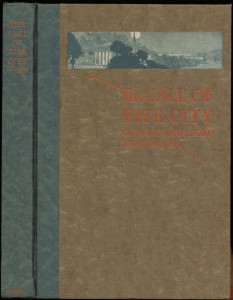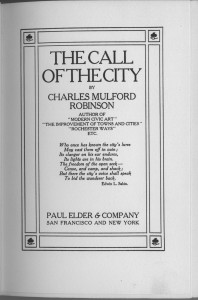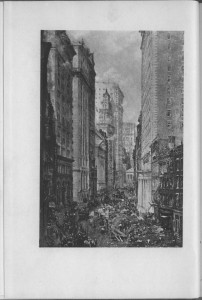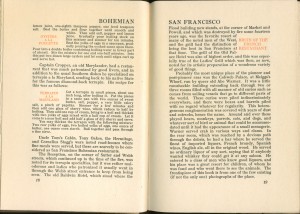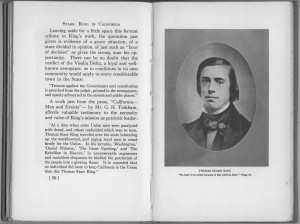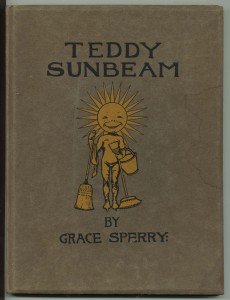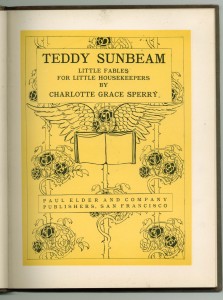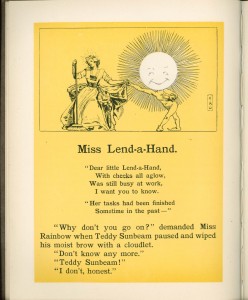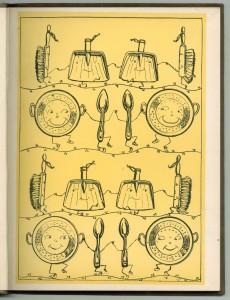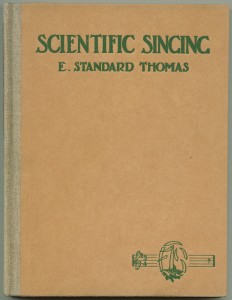
In his 1916 book Scientific Singing, E. Standard Thomas wastes no time in getting to his point:
Do you realize that you can sing? Do you realize that to sing is a normal expression of your spiritual nature? Do you realize that song has a place in every life?
Clearly, Thomas was a singing teacher, and this book was his manifesto. In his next breath, he confronts your fears:
Why don’t you sing? Because I have no voice. Why do you say you have no voice? You have never proved it.
The real reason why you do not sing is because you do not appreciate the value singing will be to you. You do not realize that in your everyday life singing is of actual worth. Singing is not a great mystery. It is but the expression of ideas you are conceiving every day. The gift of song is possessed by all. It is within your grasp. You can appreciate it. You can attain it. You can express yourself in song.
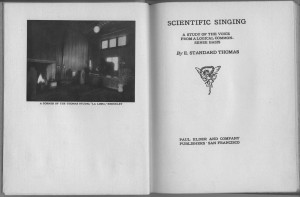
Edgar Standard Thomas (1883-1952) was the adopted son of Captain Richard Parks Thomas (1826-1900) and his wife Jane Watson Thomas (1829-1919). Capt. Thomas was a Civil War veteran and owner of the Standard Soap Company in west Berkeley. (Edgar’s middle name “Standard” was taken directly from the name of the soap company.)
Capt. Thomas owned a large tract of land north of the UC Berkeley campus, an area he called “La Loma” (Spanish for “hill”) but which is now colloquially called “Nut Hill,” possibly referring to Capt. Thomas’s well-known eccentricities.
The Thomas home was located on what is now Greenwood Terrace. The San Francisco Call society pages of 6 August 1911 reported that
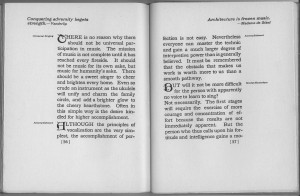
Mrs Thomas and her son, Edgar Standard Thomas, have returned to their North Berkeley home after an absence of two months in the east. The Thomas home, ‘La Loma,’ has been one of the show places of Berkeley for 30 years. Mrs Thomas recently built her son a studio overlooking San Francisco Bay.
After Capt. Thomas died in 1900, his widow Jane subdivided the La Loma Park tract. Edgar’s new studio, a photo of which appears on the frontispiece, was designed in 1910 by famous architect Bernard Maybeck. It was located along Buena Vista Way, between Greenwood Terrace and La Loma. The studio burned in the 1923 Berkeley fire and was not rebuilt.
Edgar Thomas and his parents are buried in the same plot in the Mountain View Cemetery in Oakland.
I wish to thank Daniella Thompson for sharing her extensive research on Capt. Thomas and La Loma Park. Here is a three-part article Daniella wrote for the Berkeley Architectural Heritage Association website:
